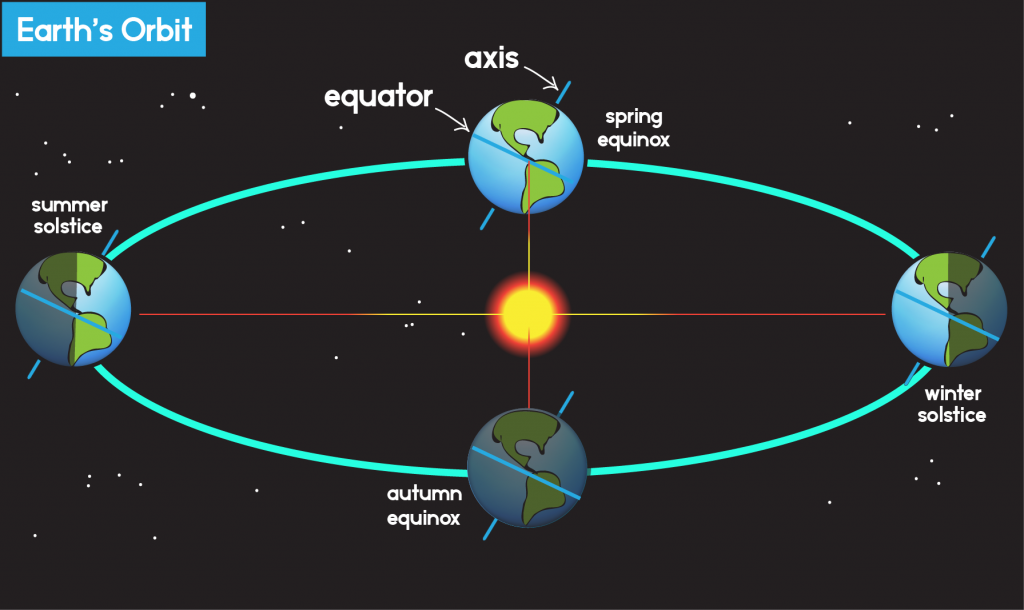Section 1: Earth’s Motion

The study of the moon, stars, and other objects in space is called astronomy. The sun is the nearest star to Earth and has a diameter 100 times greater than Earth’s. The sun’s core reaches temperatures over 15,000,000°C, with the surface reaching 5,500°C. A small part of this energy reaches Earth as light and thermal energy.
The Earth moves through space in two ways: rotation and revolution. Earth orbits, or follows a path, around the sun, making one complete revolution every 365.24 days due to the sun’s gravitational pull. A revolution is the movement of one object around another object. As Earth revolves around the sun, it rotates or spins on its rotational axis, which is the imaginary line on which it rotates. Because Earth’s surface is curved, different parts receive different amounts of the sun’s energy. As a result, the Earth’s orbit is an ellipse, or an elongated, closed curve. Because the sun is not centered in the ellipse, the distance between the sun and Earth changes during the year.
The seasons are determined by the tilt of Earth’s rotational axis as Earth revolves around the sun. The hemisphere tilted toward the sun receives more daylight hours than the hemisphere tilted away from the sun. This is because Earth’s tilt causes the sun’s radiation to strike the hemispheres at different angles. As a result, the hemisphere tilted toward the sun receives more total sunlight than the hemisphere tilted away from the sun. The sun reaches its greatest distance either north or south of the equator two times a year. The day when Earth’s rotational axis is the most toward or away from the sun is called a solstice. The summer solstice is June 20th-21st in the Northern Hemisphere. The winter solstice is December 20th-21st in the Southern Hemisphere. The day when Earth’s rotational axis is leaning along Earth’s orbit, neither toward nor away from the sun, is called an equinox. The spring equinox is March 20th-21st in the Northern Hemisphere, and the fall equinox is September 22nd-23rd in the Northern Hemisphere.
Review:
- Explain the difference between rotation and revolution.
- What is an ellipse?
- What is a solstice?
